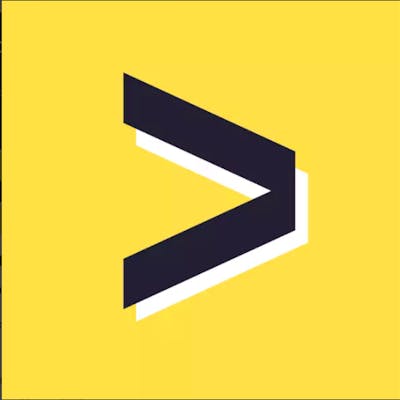How to Build a Software Engineer Career Ladder (Example)
Step-by-step guide on how to create an engineer career ladder (+ tools and career path example).
The story was originally published on Vectorly’s blog.
Are you an engineering manager and wondering “How to build career progression framework for my tech team?” Then you're in the right place! This is the third part of a big engineer career progression topic, in which you will find:
- Toolkit for a manager
- A step-by-step guide on how to create an engineer career ladder
- A career progression framework example
In the previous parts of the career progression topic you can find:
- What is a software engineer career progression framework and why do companies need to implement an engineer career ladder for their company (part #1)
- 5 stages of career planning for a tech team (part #2)
How to create engineer career ladder?
An engineering career ladder (or engineer career progression) is not just a list of developer positions and responsibilities. This is a systematized career growth roadmap, which inсludes skills, career goals, salary expectations and a professional development plan.
To help employees develop professionally and skip level, you need to systematize their career paths. To do this, it is important to create a career progression framework for your company. This step-by-step guide will help you do this effectively and meet the goals of the company.
Toolkit to create engineer career ladder
Before we move to the part on how to create a career ladder in your company, you need to get a basic toolkit. This is a list of tools (with useful links and templates) that will help manage the career growth of engineers and effectively form a career progression framework for them.
Tool #1: Skill matrix
Skill matrices include a set of skills, required for a certain role. These skills are mapped to levels on a career path, so a manager can understand how to identify the grade of each employee and what skills are required to help engineers skip level.
Companies can create their own skill matrices or simply use skill matrix template and adapt them to the needs of their team.
Useful link: Free skill matrix template for 100+ tech roles.
Tool #2: Career path template
A career path is a roadmap that contains grades and skills and helps developers understand what needs to be done to reach a new career level: both in the manager line and in the expert line.
Typically, grades represent the path from junior to senior. But as a company grows, the engineer career path can become more complex. To learn more about grades systems, read the previous article in this thread - What Is a Software Engineer Career Progression.
Useful link: Free career path template for 100+ tech roles.
Tool #3: Review
Reviews help assess the current skills of a team and identify the requirements for grades. With the help of a review, you can find weaknesses (skill gaps) and points of growth. It is important to hold reviews regularly, to make sure the skills of teammates meet the requirements of a certain grade, as well as checking their professional development progress.
To get more information on how to organize an effective skills review of a tech team - read our most detailed guide ever: Software Engineer Performance Review Example.
Useful link: Vectorly’s 360-degree reviews.
Tool #4: 1-on-1 meetings
Personal meetings help to discuss career goals, set OKRs, and build development plans with employees. Also during these meetings, a manager can monitor the employee’s progress and make decisions on grade raise and pay raise.
Vectorly has one-on-one meeting templates that help save time on prep and structure the dialogue with a ready-made agenda to make it super effective.
Useful link: 1-on-1 meeting templates.
Tool #5: PDP
PDP is a professional development plan that helps a manager approach the engineer career ladder organization systematically and meet both engineer’s career goals and the goals of a company.
Good PDP should include a combination of educational activities and working tasks on developing focus skills in order to successfully implement continuous learning in the workflow of a tech team and meet career goals faster.
To build an effective PDP for your tech team that will really work - read our guide: 4 Steps to Integrate Professional Development Plan Into Your Workflow.
Useful link: Vectorly’s growth plan.
Step-by-step guide to build engineer career ladder
So, now you have the set of tools you will need to create a career ladder framework for your tech team. Let's move on to the steps of its creation.
4 steps to build engineer career ladder:
- Create a list of skills
- Set grades
- Map skills to grades
- 1:1 to build PDP
The picture below shows these main steps on how to create engineer career ladder adapted to the current skill level of the team and with transparent requirements for each grade and professional development plans to reach the desired position.

Now, let’s dive into details and consider each step mentioned above.
Step 1: Create a list of skills
At this stage, a list of skills is formed that are necessary for a particular role. The manager can create their own list, or use ready-made skill matrix templates and customize them to the needs of their team.
This is how an engineer skill set looks like in Vectorly:

Get free skill matrix template for 100+ tech roles on your email.
Step 2: Set grades (levels)
Next, a career path is formed. It contains job levels (or job grades) and their description - what skills are required to take a certain position or skip to the next level.
Depending on the size of the company, the career path may look different. Read more about the types of career ladders in the first article of the big career progression framework topic.
You can build your own career path, using a ready-made template and customize it to the needs of your company.

Use Vectorly’s engineer career ladder template for your tech team for free.
Step 3: Mapping skills to grades
In order to set relevant requirements for job levels in your team, you need to assign employees to their current grades and run a skills review. After doing this, you’ll get an understanding of the real level of skills of your teammates of different grades, and based on these analytics, set the requirements for job levels on a career path.
3.1. Assign people to grades
When you have created a career path, distribute employees according to their current grades - Junior, Middle, Senior, Tech Lead (or other levels you have adopted in your company).
3.2. Hold a skill review
Run a review to assess the skills and get the real picture of the current state of a team.
Read: Software Engineer Performance Review Example
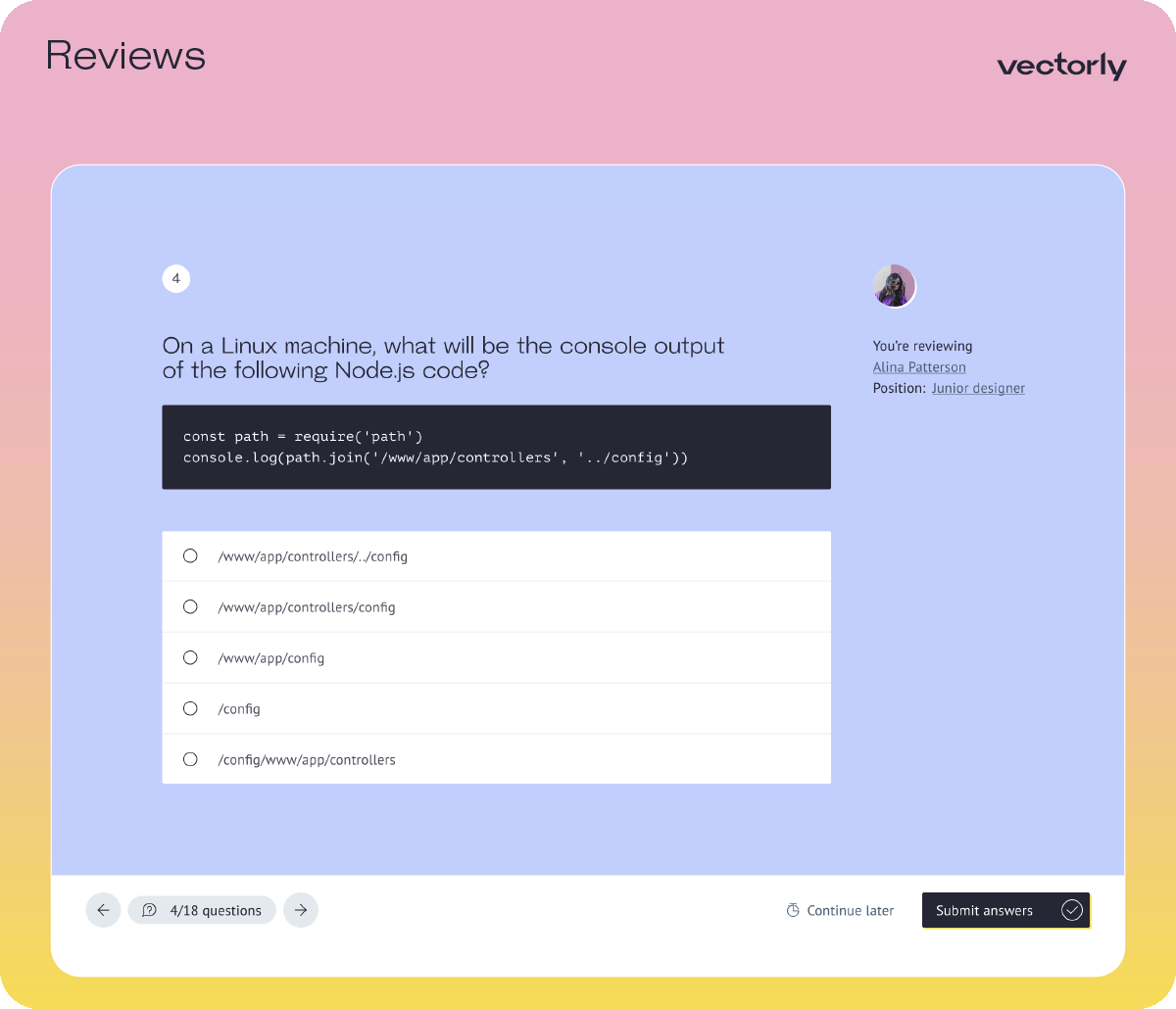
Hold easy & no fuss 360-degree review with Vectorly.
3.3. Get team analytics
Based on the results of the skills review, get insights on the current state of the team's skills.

3.4. Set requirements for job grades
After you have performed a skills review and found the skill gaps, set requirements for every level on a career path. This will help you understand what skills engineers need to develop, in order to get a grade raise.
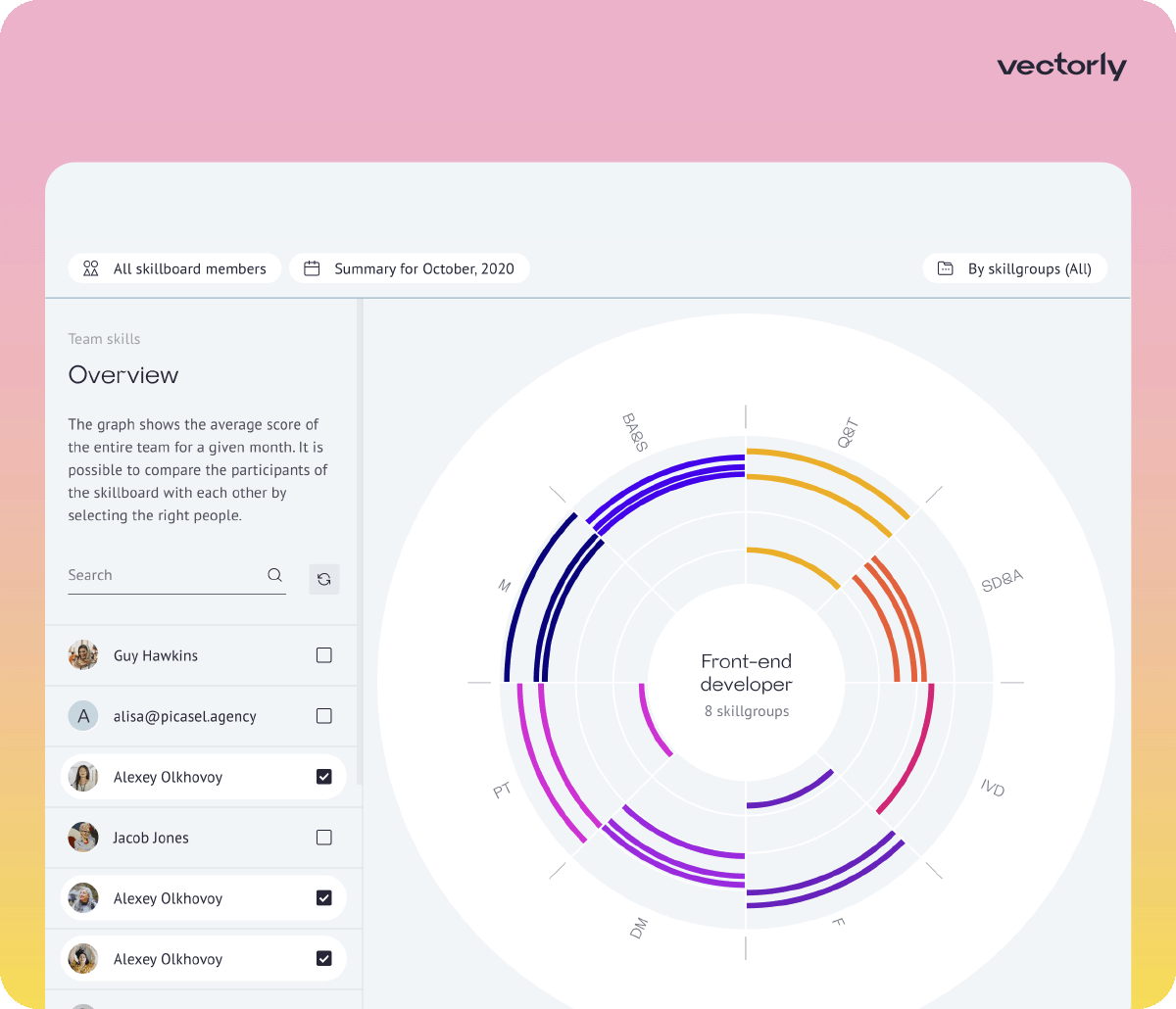
Step 4: 1:1 to build PDP
Once you have determined the current level of skills of the team members and set the requirements for grades, it's time to discuss their professional development plans.
4.1. Discuss and set career goals
To do this, set up a 1-on-1 meeting, where you discuss what career goals the developer has in mind, as well as their plans regarding their future in the company and salary expectations.
4.2. Discuss and set OKRs.
During these 1-on-1 meetings, a manager should also inform an employee about the business goals the company has and set OKRs for them that will help meet these goals.
As a result of this discussion, an individual professional development plan is created, which should include learning and working tasks for developing focus skills.
Read: 4 Steps to Integrate Professional Development Plan Into Your Workflow.
To save time on prep, use Vectorly's one-on-one meeting templates, with a ready-made agenda to have a constructive and helpful dialogue with an engineer.
Engineer career ladder example
The basic (and most common) software engineer career path looks like a change of levels — engineers skip from one level to another within the framework of the role approved at the start: Junior Developer, Middle Developer, Senior Developer, Tech Lead

Use Vectorly’s engineer career ladder template for your tech team for free.
As the company grows, the career progression framework should become more complex — intermediate positions (levels) on the career path can be introduced.
Buffer has developed their own career progression framework that allows employees to develop professionally and move along the career ladder without becoming a manager. This framework has two equal growth opportunities - the individual contributor track and the managerial track.
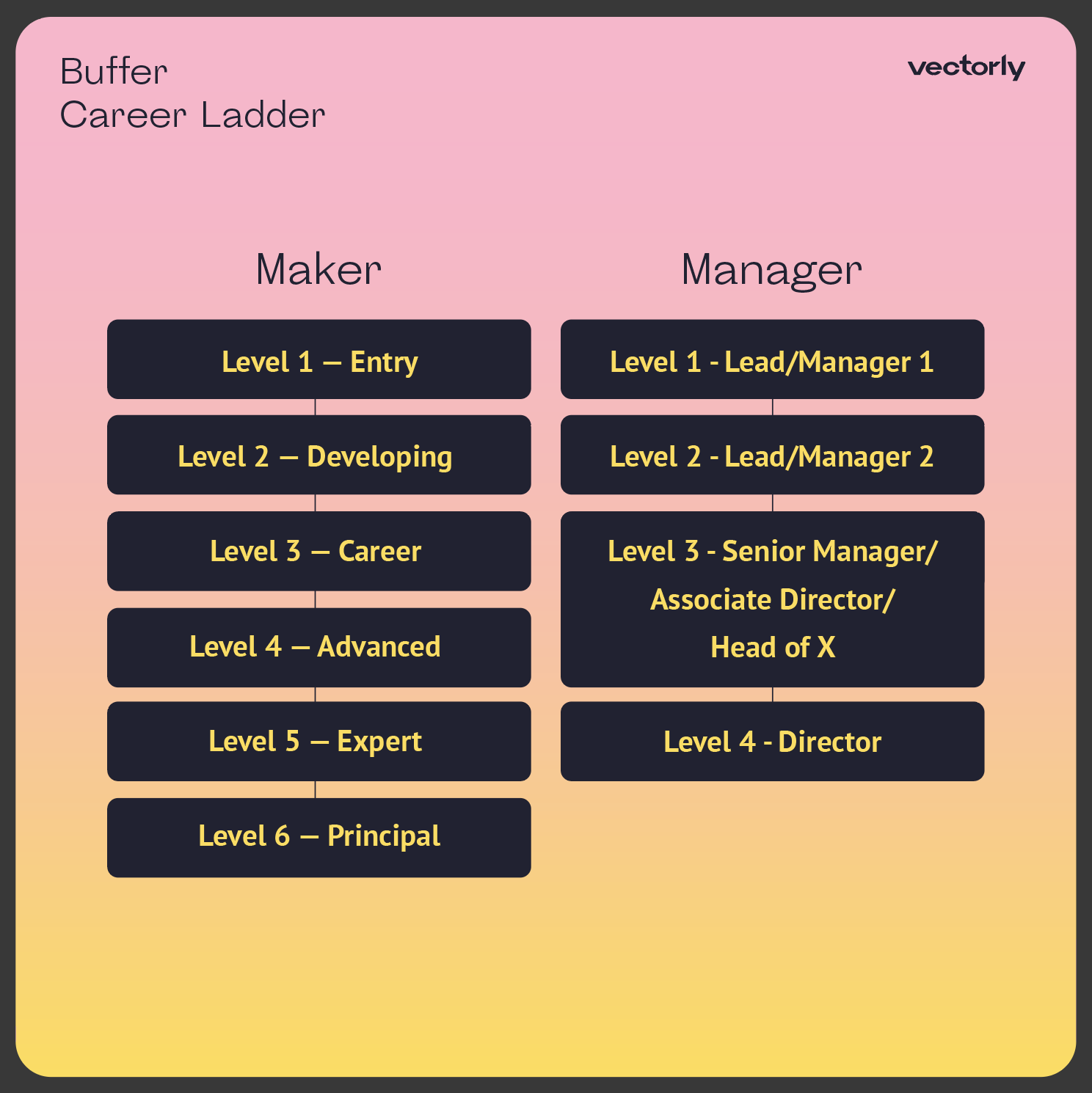
You can use the Buffer career path template to build an engineer career ladder for your tech team.
One of the variations of a dual-ladder approach was developed at Songkick Technology:
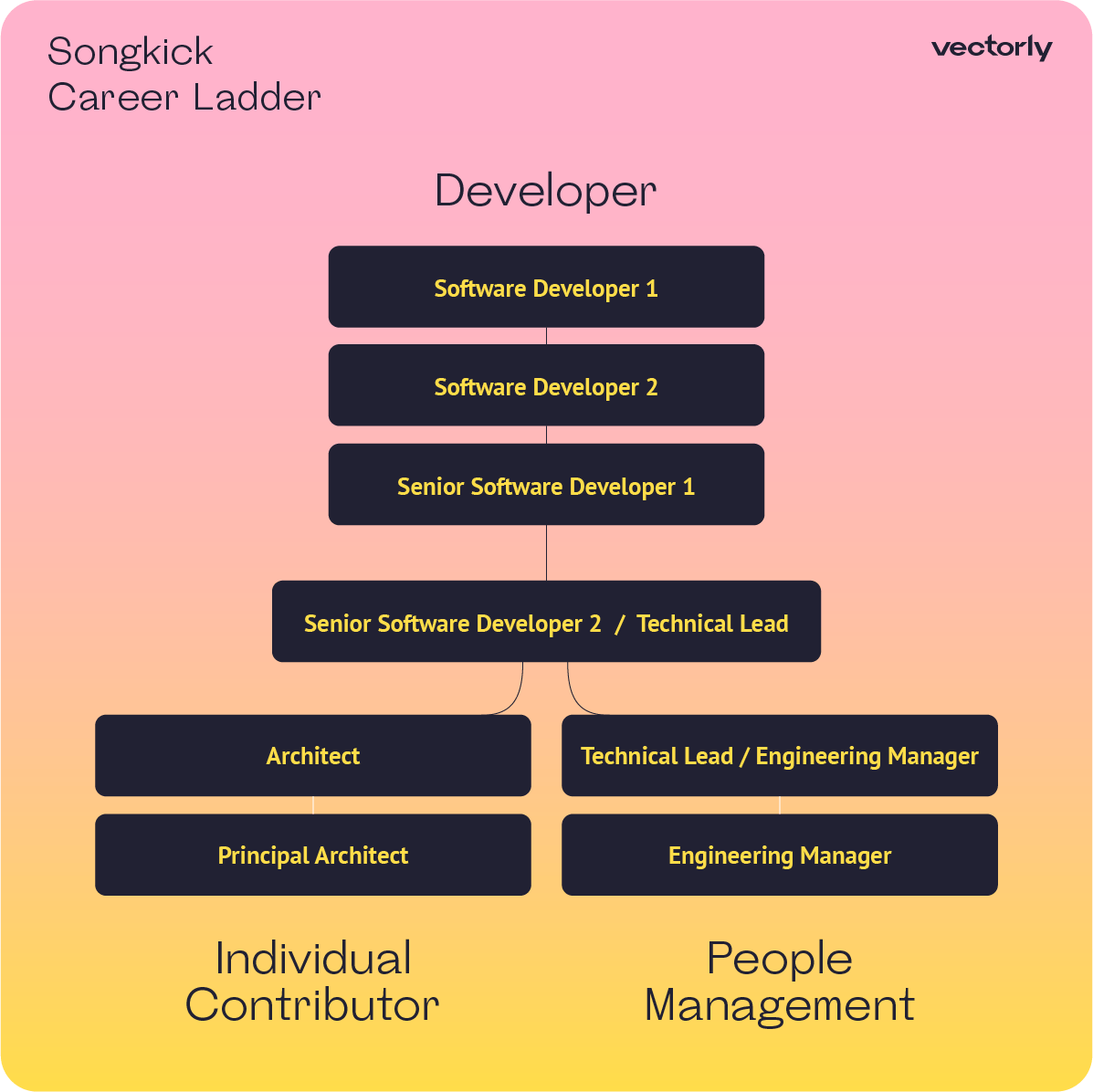
You can adapt the Songkick developer career path template for your own company.
Still have questions on how to create a career progression and organize career planning for your team? Don’t worry - Vectorly expert will help you to figure it out on a free 25-min call.
The story was originally published on Vectorly’s blog.
